What is a pinhole camera and how does it work?
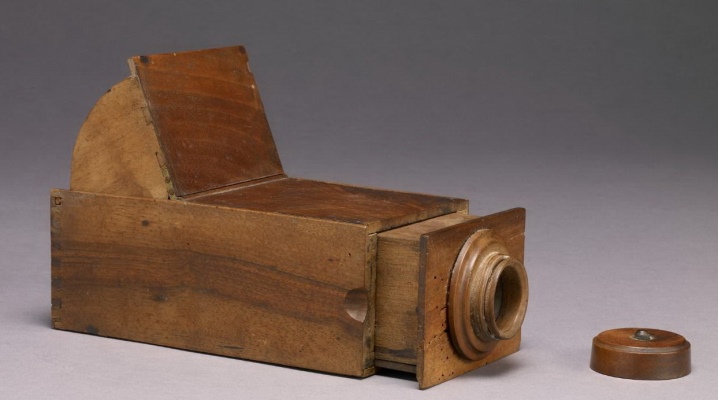
It is impossible to imagine life in the information and technological world without photographs. At the same time, few people thought that without a pinhole camera, modern cameras and other equipment would not have appeared. From the material in this article, you will learn what it is, when it was created, what is the principle of its work and who invented it.

What it is?
The camera obscura is considered the prototype of the modern photographic camera. Translated from Latin, it means "dark room". It is a simple optical device with the help of which images of displayed objects are obtained on the screen. Outwardly, it is a dark box that does not transmit light, with an opening and a screen covered with thin white paper or frosted glass.
In this case, the hole is located on one side, and the screen - on the other, opposite. The effect of the device is quite unusual. When the beam passes through the hole of light, the object is displayed on the wall opposite to the hole in an inverted and reduced view. This principle continues today in some cameras.
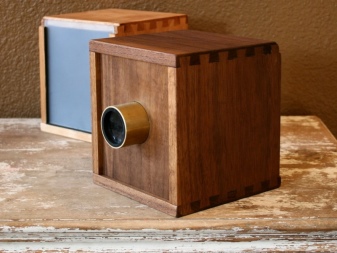

History of creation
The first camera obscura is considered to be large boxes and dark rooms with tiny openings on one of the 4 walls. The exact date of the creation of the camera obscura is unknown. The principle of its creation was first attributed to Roger Bacon, who lived in 1214-1294. However, this is refuted by the book "History of Photography", written by the couple Gernsheim.
It states that this principle was known in the middle of the 11th century to the Arab scholar Hasan-ibn-Hasan... At that time, the famous scientist, physicist and mathematician used to think about the linear principle of light propagation. His conclusions were based on the effect of the pinhole camera.
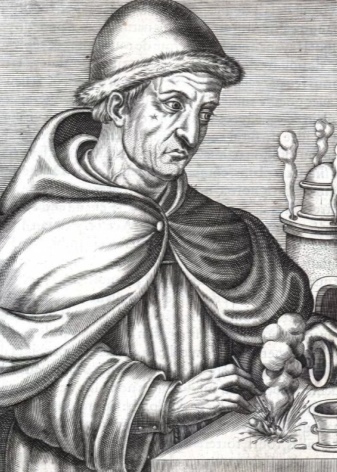
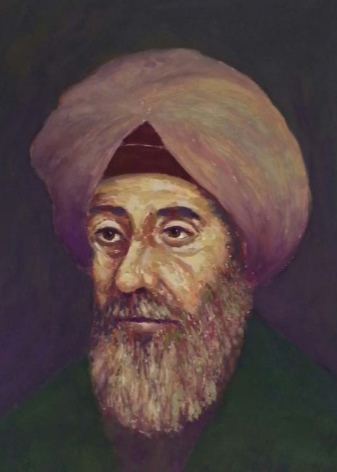
but some data allow us to assert that optical equipment was used already in the 5th-4th centuries. BC NS. The great Chinese philosopher Mo Tzu (Mo Di) described the appearance of an image on the wall of a dark room. Aristotle also mentions an optical device. At one time he was very interested in the principle of the appearance of a round image of the sun when it glows through a small square-shaped hole.

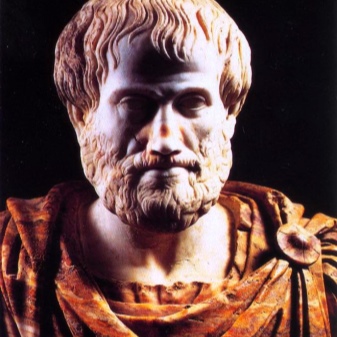
The first optical equipment for the creation of artistic canvases was created by the great master Leonardo da Vinci, who lived in the years 1452-1519. Its description can be found in the "Treatise on Painting", where the author talked about the principle of operation of an optical device. Leonardo da Vinci wrote that objects displayed on a paper sheet are rendered not only in their real forms, but also in the same colors.

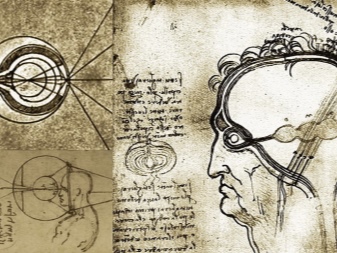
Reflection fascinated with the simplicity of the effect along with the color rendering.
Obscura cameras began to be actively used for painting landscapes and portraits. Then they were still large and equipped with mirrors that deflect light. Often, lenses were inserted into the hole, which achieved an increase in brightness and sharpness. In the Middle Ages, obscura cameras were used in astronomy (for example, the angular diameter of the sun was measured).
In addition, various researchers have written about them. For example, with the help of a camera obscura in 1544 Gemm Frisius was able to observe an eclipse of the sun. Detailed descriptions of such chambers were given by Daniele Barbaro (1568) and Benedetti (1585). They were not only large, but also heavy, using plano-convex, flat and concave lenses.
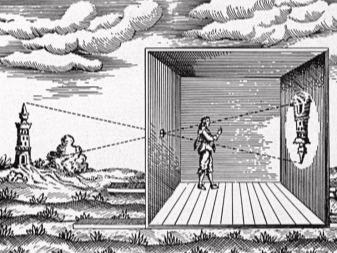
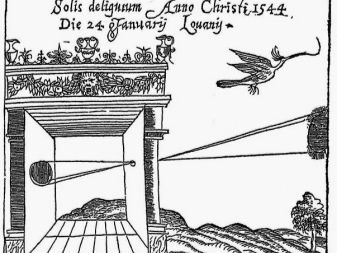
In 1611, Kepler was able to improve the camera obscura, its angle of view became enlarged. Later, in 1686, Johannes Zahn was able to make a portable version by equipping it with a mirror. It was positioned at an angle of 45 degrees and projected the object onto a matte plate placed horizontally. The displayed image has been turned upside down.
In the future, this made it possible to transfer objects to paper. Thanks to the reduction in size, it became possible to change the direction of the camera, as well as make sketches from nature.
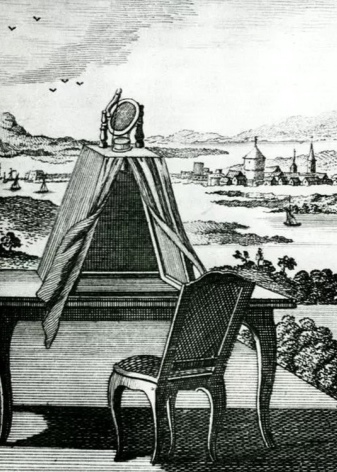

At the same time, the perspective was transmitted flawlessly, it became possible to copy details, which is characteristic of photographic images.
In the 18th century in Russia, such cameras were called "colossus for photographing perspectives."... Outwardly, they resembled camping tents. They were used to capture the view of various Russian cities. It was possible to transfer images to paper using pencils and brushes. However, at this time there was an active search for a simpler transfer and imprinting of displayed objects.
The first photographs appeared with the development of chemistry. By that time, pinhole cameras were already small boxes with a biconvex lens on the front wall, as well as with weakly transparent paper on the opposite side. In fact, these were devices for mechanical sketching of objects.

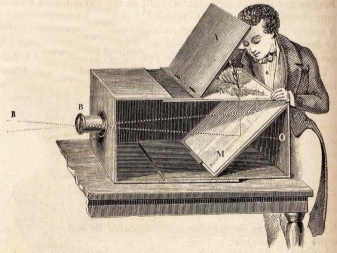
Their principle was extremely simple: the user traced the image on a paper sheet.
The effect of such cameras began to be used in portable devices that resemble modern pavilion cameras. The desire to simplify the work of draftsmen made it possible to make the drawing process fully mechanized. The displayed objects began to appear and be fixed on the plane in a chemical way.
There is no longer the need for tedious standing behind the camera and translating the image by sketching. Today pinhole cameras are rarely used. The principle of their work is still used in the production of photographic equipment.
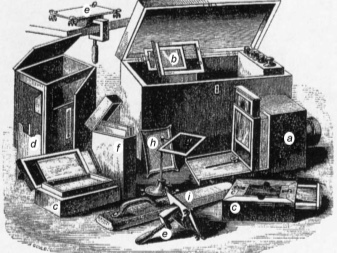
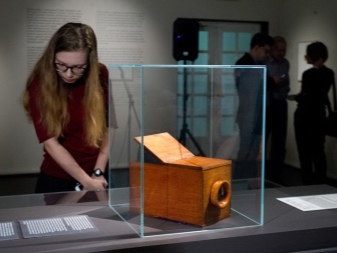
Photographers claim that the pictures she took have a greater softness and depth of field compared to lens cameras. They do not have the distortion inherent in other optical devices. As for sharpness, a lens is used to increase it.
Device and principle of operation
The principle of operation of the camera obscura and its properties resemble the work of the eyes. Similarly, displayable objects are flipped and processed. The size of the hole diameter varies from 0.5 to 5 mm. The dimensions of the displayed objects are related to the distance between the hole and the wall with the lens. As it increases, the size of the displayed objects increases.
Wherein the image quality depends directly on the size of the hole. The smaller the diameter, the sharper and darker the subject. With its increase, the sharpness deteriorates markedly, but the brightness of the displayed object increases. However, objects do not have the high sharpness characteristic of digital technology.
The sharpness of the images is increased to a certain limit, this is done by reducing the diameter of the hole. If the limit is exceeded, the sharpness of the picture is severely degraded. The scheme of work with early devices was not very convenient. It was difficult to transfer the image upside down.

When mirrors were added to the device, the operation of optical instruments was simplified.
Application in painting
Many in the Middle Ages were struck by the quality and realism of paintings by different artists. The secret was the use of optical devices. While the camera obscura with its concave lenses has become a real help in painting.
The use of the camera in painting was not advertised. The use of such objects made it possible to achieve high accuracy of image transmission. Examination of Renaissance paintings suggested that the artists used boxes with holes less than 5 mm. The detailing of the images on the canvases was striking in realism.
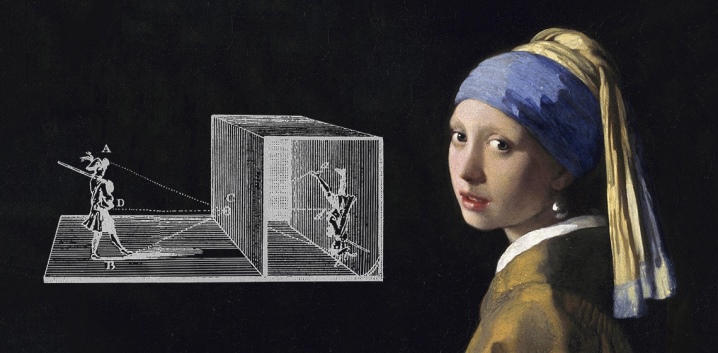
One of the most famous paintings in which experts noticed the use of a camera obscura or a concave mirror is considered portrait of the Arnolfini spouses, painted by the Flemish Jan Van Eyck in 1434... She was distinguished by almost perfect drawing of details.
The use of the camera is indicated not only by the impeccably traced chandelier with a lot of light reflections and the candlestick of an intricate shape. Particularly noteworthy is the mirror on the back wall, which depicts the reflection of all the furnishings in the room and even the shadows. The documentary accuracy could not fail to attract the attention of researchers.
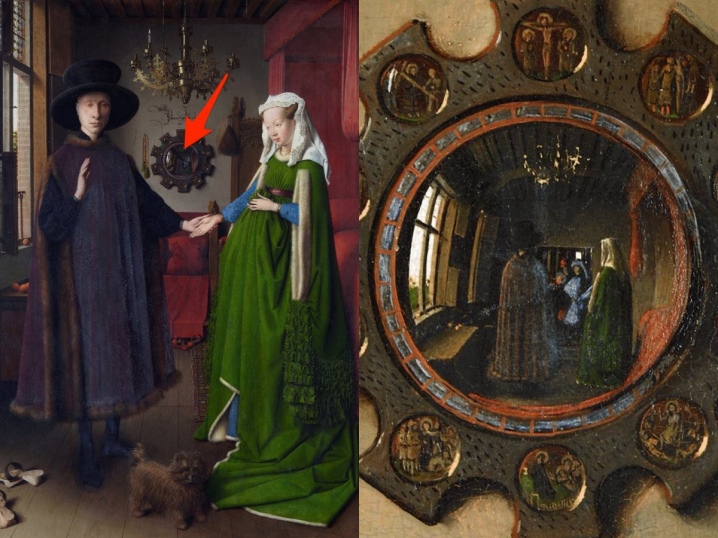
It was impossible to do this without additional equipment.
However, the same studies have revealed that the artist had previously used a camera obscura to paint his canvases... A striking evidence of this is his painting "A Man in a Red Turban". She seems to be photographed, and the professionalism of the drawing indicates that this is not the first use of an optical device.
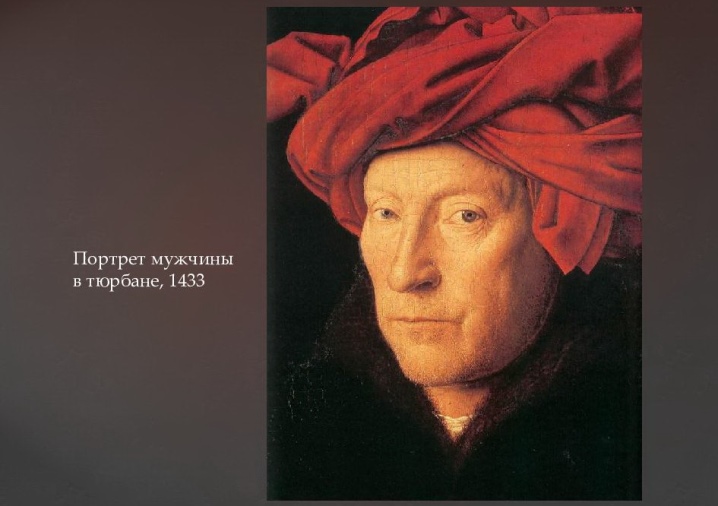
Regardless of the talent and refinement of the drawing skills of famous masters, it was impossible to achieve amazing accuracy in detail then. Gradually, the technique of using optical equipment began to improve. By the beginning of the 16th century, it became more accessible, however, adding lenses did not solve the problem of the inverted image yet.
That's why there were still many left-handers on the canvases of great artists. An example of such work can be called a painting by Frans Hals, which depicts several left-handers at once. A left-handed man and a woman are feasting on it; another left-hander threatens them through the window. And even the monkey touches the hem of the woman's dress with its left paw.
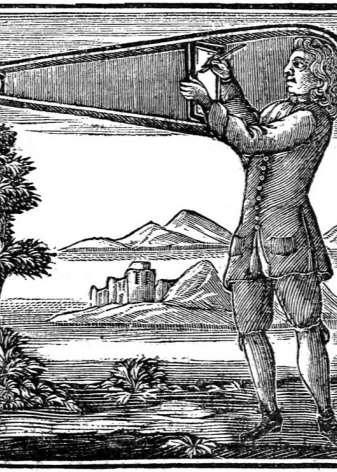

Over time, the lack of display has been eliminated. In the 17th century, not only mirrors, but also optical prisms appeared in the optical device. Therefore, the problem of inverting the image has been eliminated. Such chambers came to be called lucid chambers. They were used by eminent artists.
Photographic painting can be traced in the canvases of Jan Vermeer. An example of this is the painting "The Thrush". It is not difficult to understand that Vermeer used an advanced camera obscura. His canvas has the same defects that are characteristic of some modern cameras (for example, sides and objects falling out of focus).


Interesting Facts
The relevance of the camera obscura in the development of painting and science is obvious. This is evidenced by various interesting facts.
- Thanks to her, documentary artists appeared (for example, the great Canaletto, who painted Westminster Bridge, the masters of the brush LK Carmontel, Belotto, FV Perrot). In addition, she contributed to the development of photography.

- Obscura cameras were also used in animation. With their help, the contours of the artists were outlined, achieving the most natural outlines, movements and proportions. Vivid examples of this are such cartoons as "The Scarlet Flower", "The Frog Princess", created in the last century.
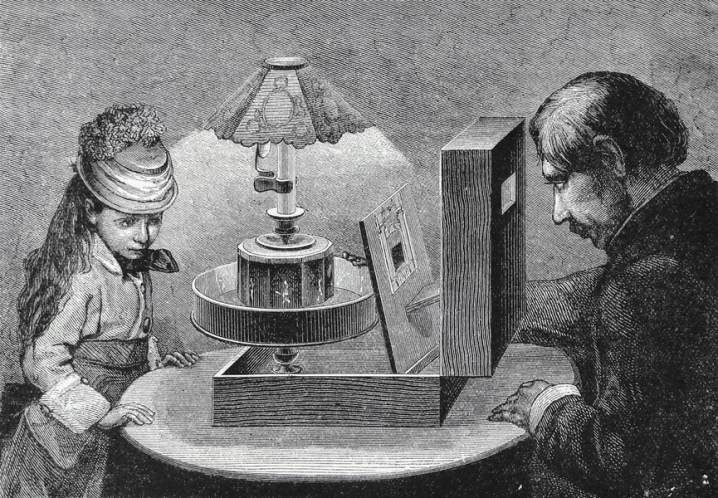
- Renaissance artists used optical devices, which were dark rooms with a hole that could be located not only in the wall, but also on the ceiling. Remarkable is the fact that they had to paint in complete darkness.
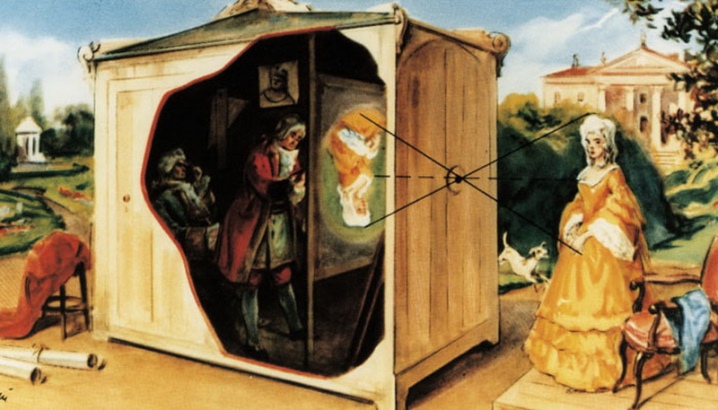
- Despite the fact that today the camera obscura is losing its relevance, it is used by novice artists. For example, with its help, walls are painted, decorating them with realistic landscapes or other images.
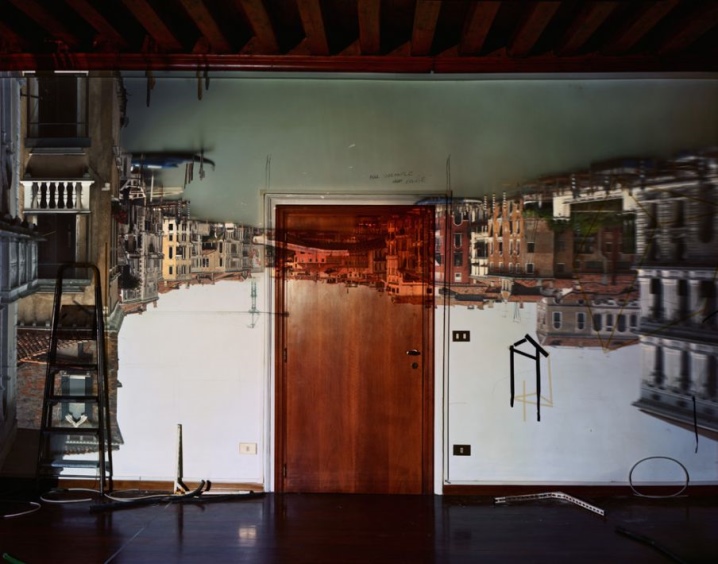
- In addition, this optical equipment is used to obtain unusual photographs and demonstrations, in which the younger generation is shown how this device works, how it was, how to use it correctly.
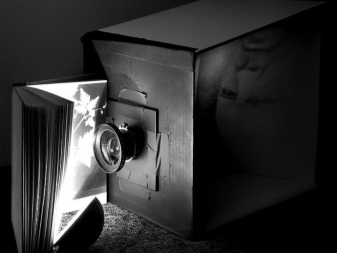
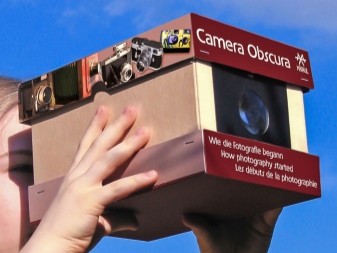
- Remarkable is the fact that, in search of improvements, an optical camera in the form of a four-sided pyramid was made. Unlike the boxes, the device was based on 4 slats, which were connected at the top with couplings.The camera screen became a white background, on which special fixing reagents were subsequently applied.
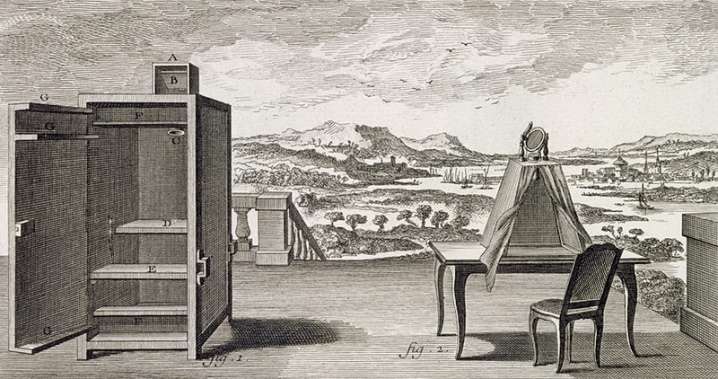
- The method of obtaining images in a camera obscura (daguerreotype) took shape by 1839. A silver-plated metal plate was placed in the dark and doused with iodine vapor, then placed in a camera for long exposure to bright light. Thereafter, the plate was developed in mercury vapor until an amalgam was obtained. Then the daguerreotype with a mirror image was fixed. With the invention of light-sensitive materials, pinhole cameras became cameras.
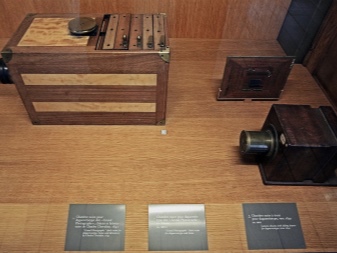
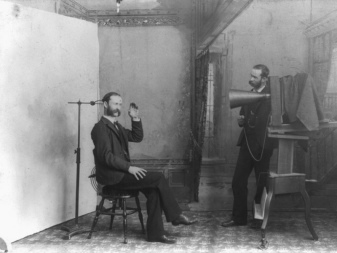
For what a pinhole camera is, see the next video.













An informative and helpful article, my thanks to the author!
Many thanks to the author! Without water, on business, very interesting!
Thanks. Very good article.
Very fascinating article, thanks to the author!
Very interesting, thanks.
The comment was sent successfully.